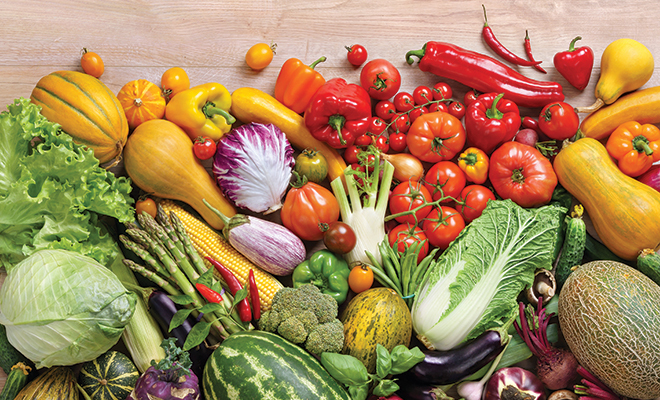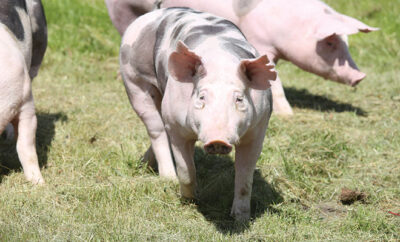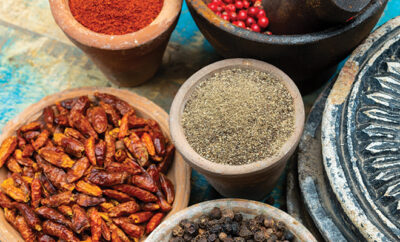
Eating Sustainably
People who love to cook often pay attention to small details. We want to eat as well as we can, serving affordable yet high-quality ingredients. Over time, we shop for food with a critical eye. Is it fresh? Will it taste good?
B ut choosing food that sustains us can be complicated. How so? Well, let’s consider a possible scenario in planning a menu for your next family gathering. Your parents just embraced the DASH diet, or Dietary Approaches to Stop Hypertension, so you’ll need plenty of fruit and veggies, and go easy on using salt. Your oldest daughter has decided to eat vegan, but if you serve any grains or bread, remember that your sister and her boyfriend are now eating gluten free. Got all that? Okay, now, what’s your dinner menu going to be?
It’s enough to make any sane person run from the grocery store, screaming.
But wait; there’s more. There is a school of thought that our food choices should also be sustainable choices. What does that mean, exactly? The answer is that it might mean different things to different people. In general terms, a sustainable choice generally means one that strikes a balance between feeding people well, while also demonstrating good stewardship of the earth, land, air and water. Let’s take a look at some of those choices
If you enjoy farmers’ markets, you’re spending your food dollars locally on food grown nearby, picked at the height of the season, loaded on a truck and brought to market. If the farm adheres to organic practices, there is a minimal amount of chemical application to crops, which limits harmful chemicals that might leach into ground water. Small farm operations often produce a diversity of crops and livestock while using a minimal amount of chemicals. And the produce from small farming operations often has more micronutrients than corporate-farmed crops and livestock.
There are also drawbacks to small farms. Working a small farm is labor intensive and requires more physical labor to tend crops and livestock. If you’ve ever participated in a local farming cooperative, you know that the fate of your groceries is tied to the farmers’ fate in the fields. The produce in your weekly delivery is at the mercy of inclement weather and pests. And variety may be extremely limited. There will be a few weeks where the bounty of zucchini will exhaust your creative skills as a cook, turning to recipes for making zucchini soup, zucchini boats, zucchini pasta and zucchini bread.
In comparison, corporate farming comes with its own set of advantages and disadvantages. Large farming operations profit from economies of scale. Mass production of one product is technically efficient, requires very little manpower and is relatively free of blemishes from pests. Yet the down side is that large farm operations consume more resources. They require regular irrigation and use herbicides and pesticides. Large-scale farming requires less manpower, but instead requires large-scale equipment, using oil and gas to power that equipment for planting and harvesting food. Many crops in large-scale operations are simply not grown for food consumption. Corn and soybeans are often processed for use as fuel or animal feed. And large-scale livestock operations also require large amounts of resources such as water, grains for feed, and the stock requires regular doses of antibiotics and hormones.
Wasting food is another sustainability issue. How many times have you or your friends complained about the family’s waste each week when you throw away food that has spoiled? This poses several problems. First, the money spent on the food was wasted. And the point of purchase reflects the energy involved in all the resources that brought the food to market. How much energy, water, material and labor did it take to grow the food? Was it processed, then packaged and shipped? Add to those resources the energy used to throw it away and haul it to a landfill, where it decomposes and creates methane gas as well as other pollutants.
Perhaps one of the most serious sustainability issues is that overuse of some food resources may drive a species to extinction. This is especially true of seafood; for example, there is a decline in several fisheries, including cod and halibut. If you want to know more about sustainable seafood choices, Google the Monterey Aquarium’s Seafood Watch. You’ll find useful information, such as an app to use while shopping.
As a consumer, you make choices every day about the food that you buy. You and your family may have specific preferences, whether they are paleo, vegan or gluten free. In the same way you pay attention to those choices, consider the larger world around you. As the global population continues to rise, food production must keep pace with that growth. Learning about sustainability can ensure that we continue to have the choices we want, and need. ■
Sources: greengarageblog.org seafoodwatch.org and sustainabletable.org.







